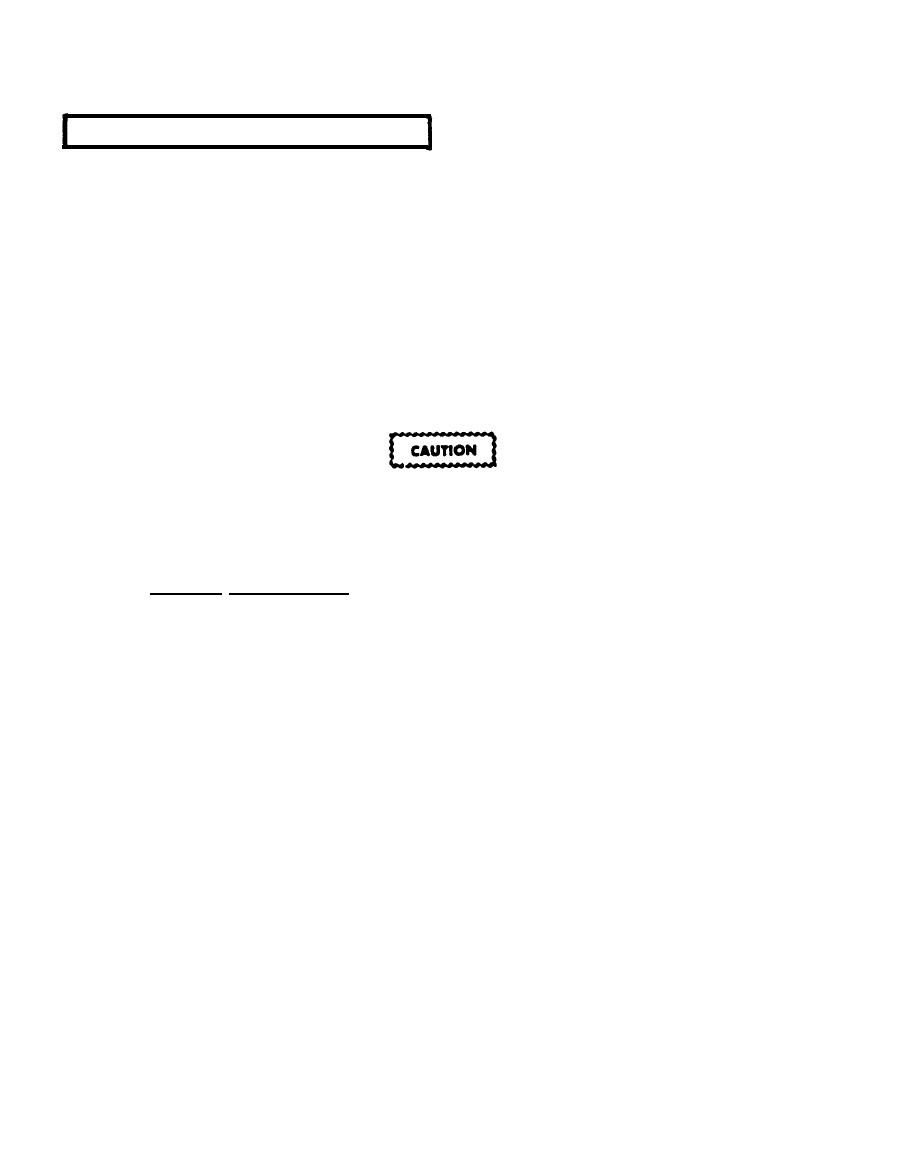 |
|||
|
|
|||
|
|
|||
| ||||||||||
|
|
 TM5-4120-383-14
5-14.
LEAK TESTING.-Continued
NOTE
The electronic refrigerant gas tester is highly
sensitive to the presence of a small quantity of gas
in the air, and due to this fact it is quite
effective in the detection of small leaks. However,
due to the rapid dispersion of refrigerant gas into
the surrounding air, difficulty may be encountered in
pinpointing large leaks.
The detector must be used
in a well ventilated but draft-free area.
In this method, a strong solution of a
(2) Soap Solutions.
liquid detergent and water is brushed onto all points of possible
leakage while closely observing for the formation of bubbles.
If the soap solution testing method is used,
thoroughly rinse with fresh water after testing is
completed.
A residual soap film will attract and
accumulate an excessive amount of dust and dirt
during operation.
c. Testing Procedures.
To perform leak testing by use of the
electronic detector, it is necessary that the system be pressurized
with a proportion of refrigerant gas. To perform leak testing by
use of the soap solution method, the system may be pressurized with
dry nitrogen alone.
(1) To pressurize a system that has some refrigerant charge,
for either leak testing method:
(a) Connect hoses from a charging manifold to charging
valves.
NOTE
If it is possible that the problem may not be a leak
and that you may not have to replace a refrigeration
system component
Refrigerant-22 may be substituted
for nitrogen in the following test.
If nitrogen is
used you will have to discharge, evacuate, and
recharge the system after test is completed.
(b) Connect a nitrogen pressure regulator and nitrogen
bottle to center hose connection of charging manifold.
(c) Open unit charging valves and charging manifold valves.
534
|
|
Privacy Statement - Press Release - Copyright Information. - Contact Us |